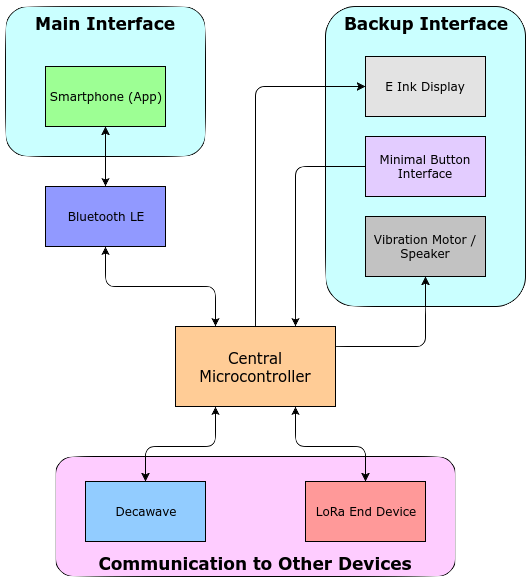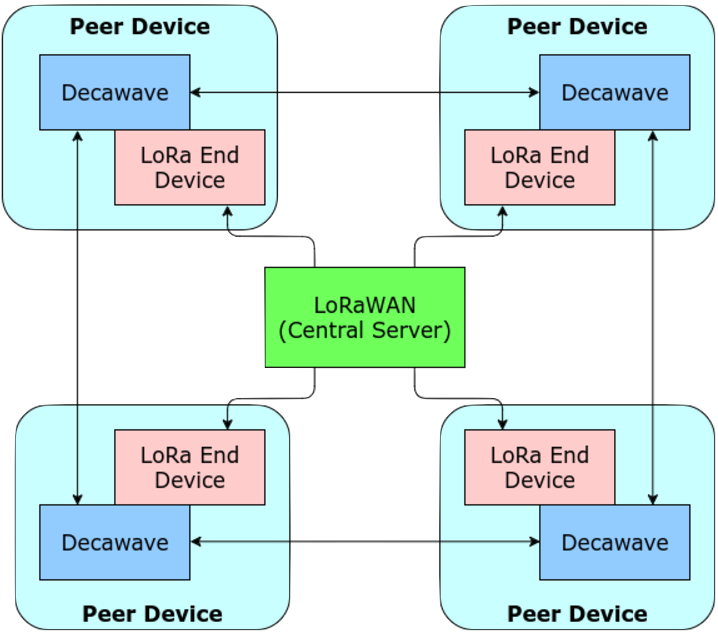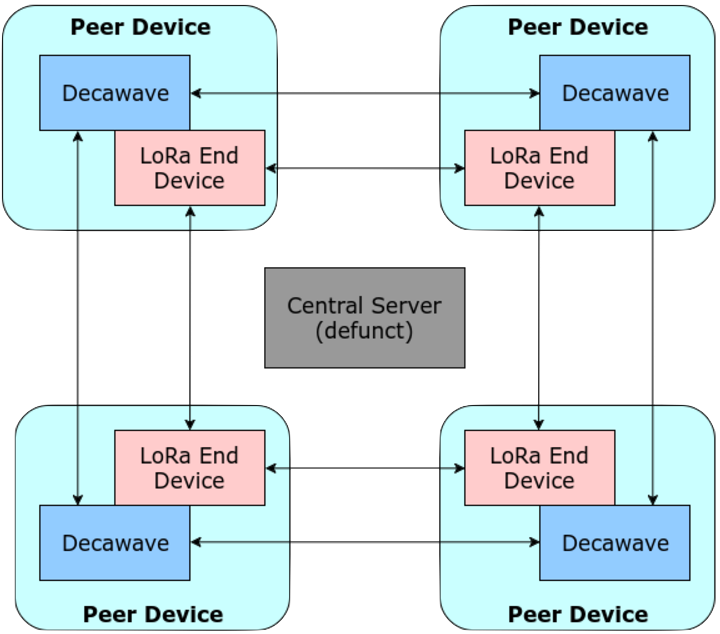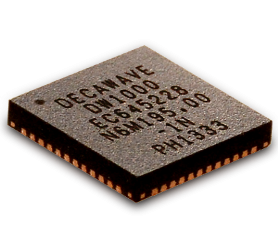Localized Asset Updates & Robust Alerts
The pager, first used by doctors in the 1950s, is still used in an estimated 90% of hospitals today, in addition to several other industries with a need for reliable communication. With the exception of those used privately in hospitals, pager networks are dead, and 2G was also killed recently.
Smartphones offer much more functionality and flexibility for doctors, but they have poor battery life, and wifi and cellular networks do not offer sufficient reliability for safety-critical contexts. LoRa provides much longer range communication than do pager networks, consumes less power than smartphone apps, and offers Peer-to-Peer communication, which could be extremely useful in the event of power outages and emergencies. Further, there are many other contexts in which a low data and low power network would be useful.

LAURA is a small device that replaces the pager, interfacing to smartphones via Bluetooth Low Energy, that can be integrated into a phone’s case or sleeve, eliminating the need for a separate device for hospital staff to carry.
Using BLE interfacing with smartphones in combination with a Decawave chip allow for cool features such as asset tracking.
LAURA has excellent battery life and an E Ink display, allowing it to function independently of smartphones as a reliable pager replacement.
LoRa network technology allows for much longer range communication than does the pager network, offers lower power consumption than smartphone apps, and adds Peer-to-Peer functionality for emergencies such as power outages.
This version of LAURA is designed to replace the pagers used by hospitals to communicate among hospital personnel. For example, each staff member would carry a LAURA device with him, and every person can use their LAURA deivce to send messages to any other person carrying a LAURA device, regardless of whether an internet connection (or even the central power) is present. In case that the phone runs out of power, LAURA devices can still receive messages from and even send some preset messages to other LAURAs and the central server. Furthermore, the LAURA device won’t need recharging for several days.
 Robust
Robust
Many smartphone apps, like Mobile Heartbeat's MH-Cure and Medxnote are popping up to aid in intra-hospital communications, but these still depend on wifi and cellular networks. Communication and data access can be slowed during times of high traffic in hospitals and can become impossible in the event of some critical systems failure. Our use of the LoRa network will ensure that LAURA users will always be connected and that their messages will be transmitted within two seconds. Further, LAURA will be secure and HIPAA-compliant.
 Low Power
Low Power
One of the biggest arguments against the use of smartphone apps among hospital staff is the amount of power they consume. A dead smartphone is not useful and takes time to recharge. LAURA will be independently powered, and we have chosen technologies that require as little energy as possible, but that still provide a robust infrastructure. Ideally, LAURA users will only need to charge their phone sleeves once a week.
 Reliable
Reliable
Current commercial-use asset tracking relies on employees' proper use of barcode scanners to manually update information about an asset. This leaves much room for human error. LAURA will bring the automated aspect of personal-use trackers to the commercial setting, allowing for less error in hospital-wide asset tracking and more time for staff to spend with patients.
 Accurate
Accurate
Chipolo, Tile, and other personal-use asset trackers use Bluetooth Low Energy, which has a low energy footprint, but is only accurate to several meters. LAURA will provide localization information accurate up to ten centimeters.
The project will contain a central ARM microcontroller that communicates with all the peripherals. A LoRaWAN chip will be used for the networking functionality, and a bluetooth chip will connect the device to a smartphone. LoRa is a low-power wide area networking protocol that is device-centric, which allows for a switch to Peer-to-Peer networking, an important requirement of our system. The Decawave chip will be used for localization and asset tracking. Decawave is a low-power time-of-flight ranging solution that provides localization accuracy of within 10cm, and we will use the LAURA devices along with a set of fixed Decawave beacons to track and localize all the assets in a given location. The backup interface of the device will allow it to function independently of the smartphone, and uses an E Ink display to reduce power consumption significantly.

Our network also supports two modes of operation. In the typical case, it operates with a central server, with devices only communicating their relative locations to the server and to each other.

In the event that there is a problem communicating with the server, the network can choose to enter Peer-to-Peer mode, where user data traverses each peer node to reach its destination.


Acts as our central server and LoRa base station, hosting the API and admin-side web app.

Used for localization for user devices and asset tracking.

Used for communication between LAURA devices, working even during hospital network and power failures.

The screen for LAURA devices is extremely low power, only requiring power to make changes to the display.

Dedicated power source for LAURA devices, to avoid drawing power from users' phones.


I'm the Note 7.
device hardware interfacing • LoRa Gateway networking stack • BLE firmware stack

Hi, I'm short.
web / mobile app development • server software • website management

Arguably less short.
LoRa Gateway networking stack • Peer-to-Peer networking stack

I dream in C.
PCB / mechanical design • Decawave firmware and localization